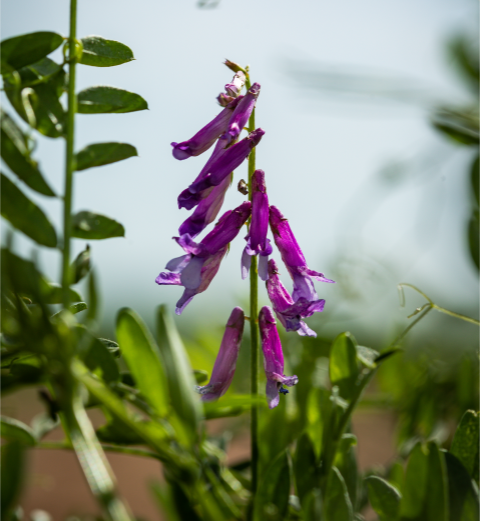Red Clover is a versatile perennial forage and cover crop that is planted on an estimated 5.5 million U.S. acres. Red clover is grown in pure stands or mixed with grass for: hay, haylage, silage, grazed, or as a green manure. Red clover is known for its rapid establishment, shade tolerance, nitrogen fixation, excellent forage quality, pollinator resource, and its tolerance to low pH, low fertility, and poorly drained soils. Red clover is an excellent forage or cover crop for use in intercropping, mixture, and over-seeding systems. Major breeding targets in red clover include increased persistence and biomass yield, increased seed yield, increased ability to establish and compete in mixtures, and increased ability to serve as a winter cover crop.
Cover crops are recommended for seasonal cover and other conservation purposes. The Cover Crop Breeding Network develops new varieties to boost the profitability of farms and protect the environment. Across the United States, the team selects for winter hardiness, early vigor, high biomass, disease resistance, flowering time, seed yield, pod retention, and soft seed. They currently focus on commonly grown winter annual cover crop species, including cereal rye, hairy vetch, winter pea, and crimson clover.









